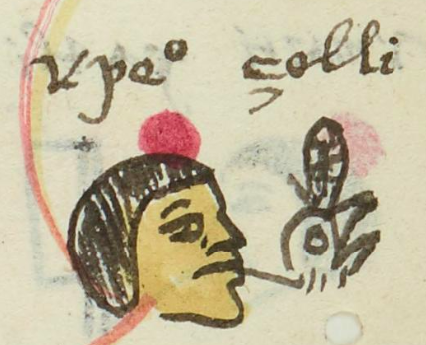Zolin (MH616v)
This compound glyph shows a vertical quail (zolin) feather. Below the feather is the head of a bird, which is likely also a quail, included to reinforce the reading. The small feather here is black and white. The bird's head is shown in profile, facing toward the viewer's right. Its beak is open.
Stephanie Wood
The quail had a role in the religious life of the Nahuas, largely serving as offerings. Their remains are very prevalent in the finds at the Templo Mayor, and they are prominent in the Mixtecs' Codex Nuttall. For further information see Elena Mazzetto, "Quail in the Religious Life of the Ancient Nahuas", en Milbrath, Susan y Elizabeth Baquedano (coords.), 2023, Birds and Beasts of Ancient Mesoamerica. Animal Symbolism in the Postclassic Period, Denver, University Press of Colorado, pp. 200-219.
Stephanie Wood
1560
Jeff Haskett-Wood
quails, cordonices, birds, ave, aves, pájaro, pájaros, pluma, plumas, animals, animales

zol(in), quail, https://nahuatl.wired-humanities.org/content/zolin
El Codorniz
Stephanie Wood
Matrícula de Huexotzinco, folio 616v, World Digital Library, https://www.loc.gov/resource/gdcwdl.wdl_15282/?sp=315st=image.
This manuscript is hosted by the Library of Congress and the World Digital Library; used here with the Creative Commons, “Attribution-NonCommercial-ShareAlike 3.0 License” (CC-BY-NC-SAq 3.0).






